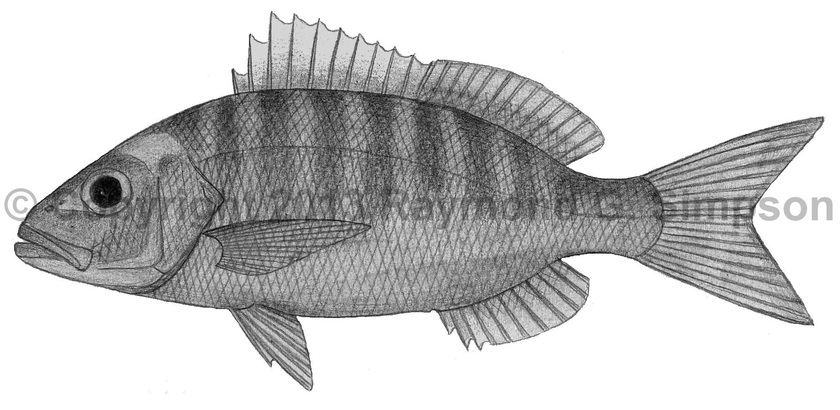
Common Name
Cubera Snapper
Year Described
Cuvier, 1828
Identification
Dorsal Fin: X, 14
Anal Fin: III, 7-8 (usually 8)
Pectoral Fin: 16-18
Gill Rakers: 5-7 upper, 11-14 lower; 17-21 total
Lateral Line Scales: 45-47
Body robust, moderately elongate (compared to others in Lutjanus) and moderately compressed. Upper and lower jaws with a row of conical teeth. Anterior upper and lower jaw teeth strong and enlarged. Vomerine teeth in a crescent-shaped or triangular patch without a median extension. Palatine teeth an elongate band. Ectopterygoid teeth absent. Soft dorsal and anal fins with scales on membranes. Maxilla scaleless. No distinct notch between spiny and soft dorsal fins. Last dorsal ray not elongated. Soft dorsal fin low and rounded. Anal fin rounded. Caudal fin truncate.
Color
Body dark gray or olive above, grading to silvery-white on the belly. Often with a reddish or bronze tinge. Young fish with several pale vertical bars on the body that fade with age. Fins body colored with darker margins.
Size
Largest W. Atlantic snapper: maximum size to 160cm TL. Commonly to 90cm TL.
Habitat
Coastal waters around reefs and rocky ledges (1-40m). Juveniles in coastal mangrove swamps.
Range
Nova Scotia to Brazil, including the Gulf of Mexico and the Caribbean Sea. Also Bermuda.
References
Anderson, W.D. 2002. Lutjanidae (pp. 1479-1504). In: Carpenter. 2002. The living marine resources of the Western Central Atlantic. Vol. 3: Bony fishes part 2 (Opistognathidae to Molidae). FAO Species Identification Guides for Fisheries Purposes. American Society of Ichthyologists and Herpetologists Special Publication No. 5. FAO of the U.N., Rome.